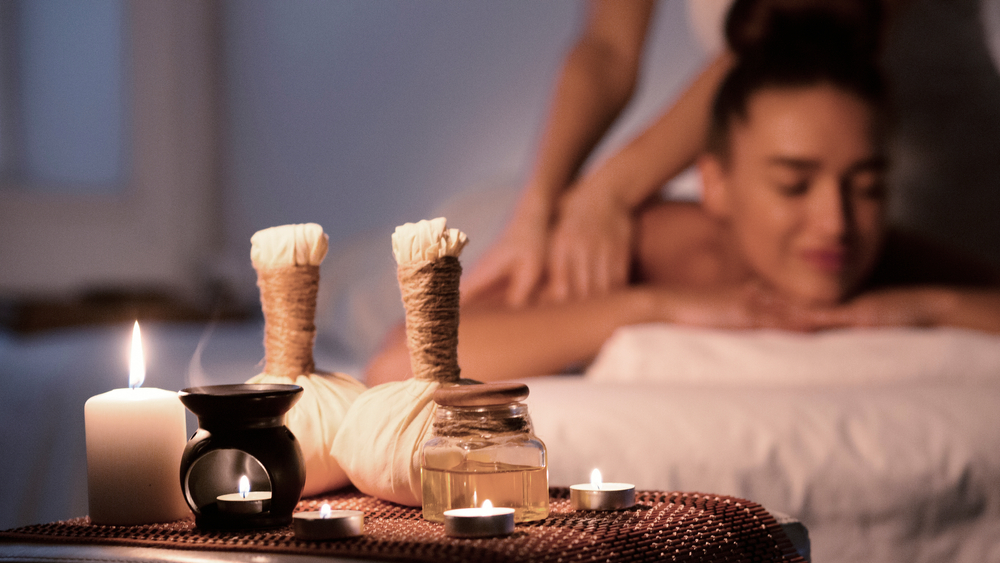
A Deep Dive into the Techniques of Thai Massage
If you’re looking for a way to rejuvenate your body and mind, Thai Massage Dallas, TX might be the answer you’ve been searching for. Unlike a typical Western massage, Thai massage blends elements of acupressure, yoga, and assisted stretching to promote relaxation, flexibility, and overall wellness. This unique and ancient therapy offers numerous health benefits, which have made it a popular treatment across the globe.
In this blog, we will explore the techniques behind Thai massage, its benefits, and how it stands apart from other forms of massage therapy. Whether you’re new to Thai massage or curious about its healing properties, this guide will give you all the information you need to understand this powerful therapy.
What Is Thai Massage?
Thai Massage Dallas, TX is an ancient healing art that originated in Thailand over 2,500 years ago. Rooted in traditional Thai medicine, it combines elements of acupressure, reflexology, and assisted stretching to enhance both physical and mental well-being. Unlike conventional massage techniques that primarily use hands to apply pressure, Thai massage utilizes various techniques including the use of elbows, knees, and feet to gently stretch and manipulate the body.
In addition to physical manipulation, the therapy involves mindful breathing techniques that help release stress and encourage the flow of energy throughout the body. Thai massage is typically performed on a floor mat, and you remain fully clothed, which differentiates it from other types of massage where you might undress and receive treatment on a massage table.
Techniques Used in Thai Massage
1. Assisted Stretches
One of the hallmarks of Thai Massage Dallas, TX is the incorporation of yoga-like stretches. The therapist assists in gently guiding your body through a series of stretches, targeting areas such as the back, legs, and arms. These stretches help improve flexibility, release muscle tension, and promote better joint mobility.
- Leg Stretching: This technique involves lifting your legs and gently stretching them to increase flexibility in your lower back and legs.
- Back Stretches: The therapist often uses their body weight to help stretch your spine and lower back, helping to alleviate tension and discomfort in these areas.
2. Acupressure
Acupressure is another technique commonly used in Thai Massage Dallas, TX. In this method, the therapist applies pressure to specific points on your body, known as “Sen lines.” These lines correspond to energy pathways in your body, and by applying pressure, the therapist helps stimulate the flow of energy, or “Chi,” which can promote healing and relaxation.
The acupressure points are often located along the back, shoulders, and feet, with the therapist using their thumbs, palms, or elbows to apply firm, rhythmic pressure. This technique is beneficial for relieving stress, tension, and improving blood circulation.
3. Compression
Compression techniques are used to relax the muscles and promote blood circulation. In Thai massage, compression involves the therapist using their palms, thumbs, and sometimes knees or elbows to apply deep, sustained pressure to the muscles. This technique helps to release tension in specific areas of the body, allowing for better relaxation and muscle recovery.
4. Rocking and Rolling Movements
To help enhance relaxation and improve flexibility, therapists often incorporate gentle rocking or rolling motions during Thai Massage Dallas, TX. These movements help relax tight muscles and improve circulation throughout the body. The rolling technique also serves as a way to calm the nervous system, providing mental clarity and overall relaxation.
The Benefits of Thai Massage
Thai massage offers a variety of benefits for both the body and mind. Below are some of the primary advantages of incorporating Thai massage into your wellness routine.
1. Improved Flexibility
One of the main benefits of Thai massage is its ability to improve flexibility. The stretching techniques used in Thai massage help to lengthen muscles, improve joint mobility, and increase the range of motion. Regular sessions can be especially beneficial for people with tight muscles or those recovering from injury.
2. Stress Relief and Relaxation
Thai massage is highly effective in reducing stress and promoting relaxation. The combination of acupressure, gentle stretching, and breathing exercises helps release tension and promote a deep sense of calm. Regular Thai massage sessions can help you manage stress and anxiety by promoting a state of physical and mental relaxation.
3. Enhanced Circulation
The techniques used in Thai Massage Dallas, TX, particularly acupressure and compression, help stimulate blood flow throughout the body. Improved circulation can lead to better oxygen delivery to tissues and organs, which supports overall health. Enhanced circulation also helps flush out toxins from the body, promoting detoxification.
4. Increased Energy Levels
Thai massage is known to increase energy and vitality. The combination of stretching, deep tissue work, and acupressure helps balance the body’s energy, leaving you feeling more energized and revitalized. Many people report feeling more awake, alert, and refreshed after a Thai massage session.
5. Pain Relief
Another significant benefit of Thai massage is pain relief. By targeting specific pressure points, Thai massage can help alleviate chronic pain, especially in areas like the neck, shoulders, and lower back. The stretching and compression techniques also work to relax tense muscles, reducing discomfort and improving mobility.
How Thai Massage Differs from Other Massage Techniques
While Thai massage shares similarities with other types of massage therapy, it stands out due to its unique combination of stretching, acupressure, and yoga-like movements.
How Thai massage compares to other popular massage techniques:
Thai Massage vs. Swedish Massage
- Swedish Massage: This is a more traditional form of massage that focuses on long, flowing strokes to relax muscles and improve circulation. It is generally gentler and more soothing than Thai massage.
- Thai Massage: Focuses on assisted stretching and deep pressure applied to specific points on the body to increase flexibility, release tension, and promote energy flow.
Thai Massage vs. Deep Tissue Massage
- Deep Tissue Massage: Primarily focuses on releasing tension in the deeper layers of muscle tissue, often using slow, firm strokes to reach muscles and connective tissue.
- Thai Massage: Combines stretching, acupressure, and rocking movements, providing a more holistic approach to healing and relaxation.
Experience the Healing Power of Thai Massage
Thai Massage Dallas, TX offers a unique and therapeutic experience for those seeking relief from stress, tension, and muscle pain. With its combination of assisted stretching, acupressure, and deep tissue work, Thai massage provides a comprehensive approach to health and wellness. Whether you’re looking to improve flexibility, relieve chronic pain, or simply unwind after a long week, Thai massage offers the perfect solution.
Ready to experience the benefits of Thai massage for yourself? Visit The Nook Spa today and let our skilled therapists guide you through a rejuvenating session that will leave you feeling relaxed and revitalized.
Frequently Asked Questions
During a Thai massage, you remain fully clothed, typically in comfortable, loose-fitting clothing. No oils or lotions are used.
Thai massage sessions typically last between 60 to 90 minutes, depending on your preferences and needs.
Thai massage is generally safe for most people, but those with certain conditions, such as severe back problems or joint issues, should consult a doctor before receiving treatment.
Many people report feeling deeply relaxed, with improved flexibility and increased energy levels right after the session.
For the best results, it’s recommended to get a Thai massage regularly, typically once a week or once every two weeks, especially if you are using it for muscle relief or stress management.

